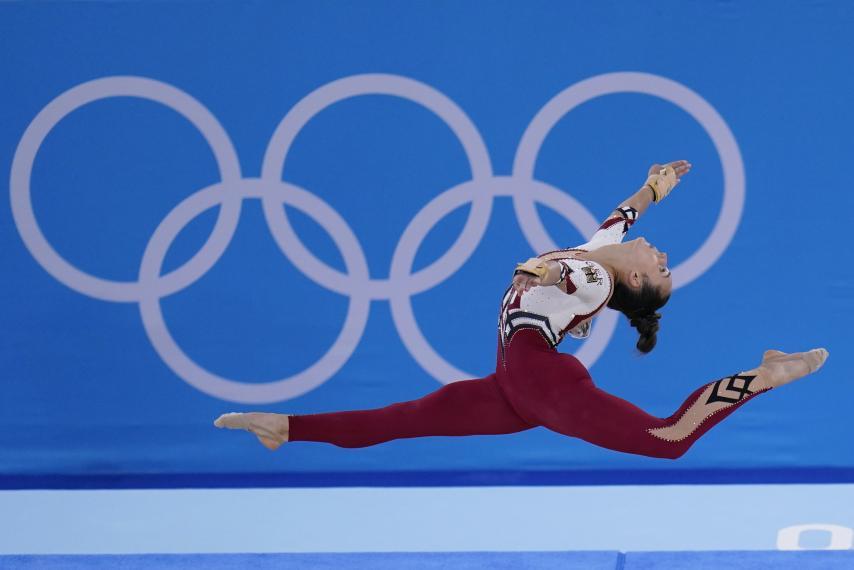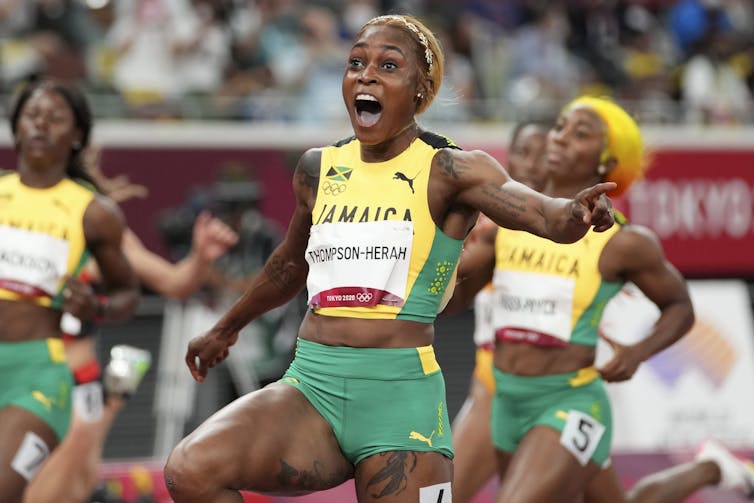The Tokyo Olympics are billed as the first gender equal Games, but women still lack opportunities in sport

The International Olympic Committee has called the Tokyo Olympics the most gender equal Games of all time, with women comprising a record-breaking 49 per cent of participants.
This near gender parity is long overdue. By adding 18 new events and establishing equal number of spots for men and women in every sport except baseball and softball, the IOC was able to reach this goal. There is also a higher number of mixed-gender competitions.
Several countries, including Australia, Britain, Canada and China, have sent teams to Tokyo with more women than men. Team selection is based on an athlete’s prior achievements and chances to win a medal. For a country like Canada, women dominated the medal haul in the first week of competition, taking 13 medals before a male athlete made it to the podium.
But aside from increasing the opportunity for women to compete at the Olympics, the Tokyo Olympic and Paralympic Games are still lacking gender equality in other areas.
Gender equality gaps in sport
In an example of how women’s bodies are still heavily policed in sport, Paralympian Olivia Breen was recently told by the International Paralympic Committee that her uniform was too revealing.
While not an Olympic sport, the recent fining of the Norwegian beach handball team for wearing shorts instead of the typical bikini uniform has sparked a global conversation about the sexualization of female athletes, and even drew the attention and support of singer Pink.
In their own statement to protest the sexualization of their sport, the German gymnastics team wore full-body unitards instead of the usual high-cut leotards. It was a decision made by the gymnasts themselves, one that was fully supported by their coaches; possibly because of a recent scandal.
Beyond uniforms, we have seen women have to fight for their right to participate in the Games after giving birth and fight to bring the babies they were breastfeeding to the Games. American Olympian Allyson Felix is stepping up to help pay for childcare expenses for women athletes so they can participate.
We have also seen the Olympics become an unsafe space for women: an intricate plan involving separate planes and accommodations was constructed to allow a member of the U.S. fencing team accused of sexual impropriety against other athletes to participate in Tokyo.
Read more: The Tokyo Olympics will be the Games of all mothers
Equal participation does not mean equity
Despite equality in athlete numbers, the IOC has not made a similar push for gender parity within its own organization. Women within the IOC occupy only a third of the executive boards and only 37.5 per cent of committee positions.
The International Paralympic Committee faces similar issues, with only 25 per cent board positions held by women. Neither organization has had a woman as president. Many of the international federations that govern each sport has equally dismal gender equity issues at the governing level.
Research shows us that having gender diversity in organizations is not only a moral imperative, but also enables better thinking and problem-solving, greater innovation and better performance.
When it comes to sport organizations, recent research has shown that having women on boards provides better financial performance.
Unequal media coverage
Media coverage of women athletes is a long-standing issue. A recent example that has come under scrutiny is when an Australian swim coach’s celebration received more media attention than the Olympic champion herself.
In an important sign of change, the NBC coverage in the United States has covered women more than men, almost 2-1, possibly because they are winning more medals.

Historically, gender equity programs have benefited primarily white women. Gender equity cannot be addressed without addressing racial equity, especially because for countries like Canada, Olympic athletes are disproportionately white.
Many past initiatives have failed to address either issue. One popular way that we have seen is “fixing women” and not the structural sexism that exists in organizations. To truly move ahead we need to focus on structural changes and to stop holding underrepresented groups hostage to stereotypes.
Sport researchers have long advocated for increased participation of girls and women in sport. In most countries, women and girls are still vastly underrepresented in sport and physical activity.
So while we are cheering on the Olympians during these Games, let’s also be looking for ways to create real systemic change to effect true equity in sport - this is the true gold medal goal.
Ann Pegoraro, Lang Chair in Sport Management, Lang School of Business and Economics, University of Guelph and Felix Arndt, John F. Wood Chair in Entrepreneurship, University of Guelph
This article is republished from The Conversation under a Creative Commons license. Read the original article.